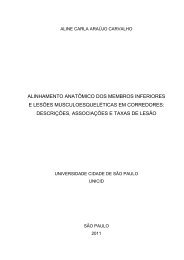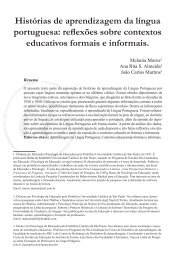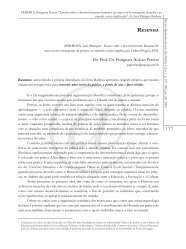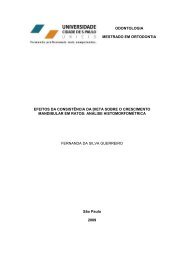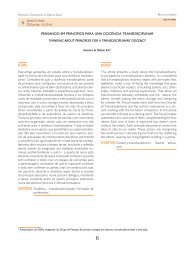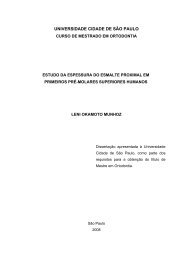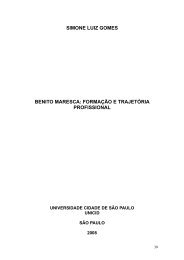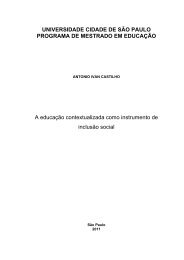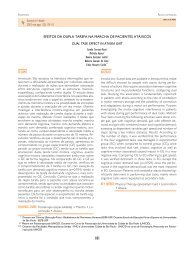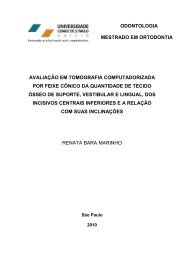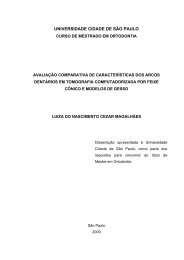Avaliação da prevalência do bruxismo infantil e sua relação ... - Unicid
Avaliação da prevalência do bruxismo infantil e sua relação ... - Unicid
Avaliação da prevalência do bruxismo infantil e sua relação ... - Unicid
Create successful ePaper yourself
Turn your PDF publications into a flip-book with our unique Google optimized e-Paper software.
Junqueira, T. H. Evaluation of the prevalence of <strong>infantil</strong>e bruxism and its relationship<br />
with the terminal plan of second deciduous molars [Dissertação de Mestra<strong>do</strong>]. São<br />
Paulo: Universi<strong>da</strong>de Ci<strong>da</strong>de de São Paulo; 2009.<br />
ABSTRACT<br />
Bruxism is a parafunctional activity of the masticatory system that is characterized by<br />
teeth-clenching or grinding, with rhythmic muscular contractions, being more frequent<br />
during sleep. This research aimed at assessing the prevalence of bruxism in the<br />
deciduous teeth and verifies the association between this parafunctional habit with<br />
the terminal relationship of second deciduous molars. Therefore, 1.011 record cards<br />
from the <strong>do</strong>cumentation files of the City University of São Paulo, UNICID, from which<br />
74 record cards were excluded because they did not meet the inclusion criteria.<br />
Therefore, 937 children of both sexes, in the age group between 2 to 6 years, from<br />
six EMEI located in Tatuapé neighborhood, eastern zone of São Paulo, constituted<br />
the sample of this study. The <strong>da</strong>ta were collected in the year of 2005 by means of<br />
questionnaires answered by the parents/guardians and clinical exams, performed in<br />
the school environment, to obtain the occlusal characteristics in the antero-posterior<br />
direction. The statistical tests, Student’s-t and Exact Fisher were used, with a 5%<br />
level of significance. In the view of the results, the prevalence of the parafunctional<br />
habit of bruxism was of 29.3% of the total sample and the prevalence with regard to<br />
the terminal relationship of the second deciduous molars was of 17.3% for the mesial<br />
degree, 10.5% for the distal degree and 72.3% for the straight terminal plane. With<br />
regard to the association of bruxism with the type of terminal relationship, significant<br />
results were not found. It was also verified that children who sleep restlessly<br />
presented 2.4 times more chances of having bruxism and the ones with hea<strong>da</strong>che,<br />
1.6 times. It could be concluded, established in the results of this research, that the




